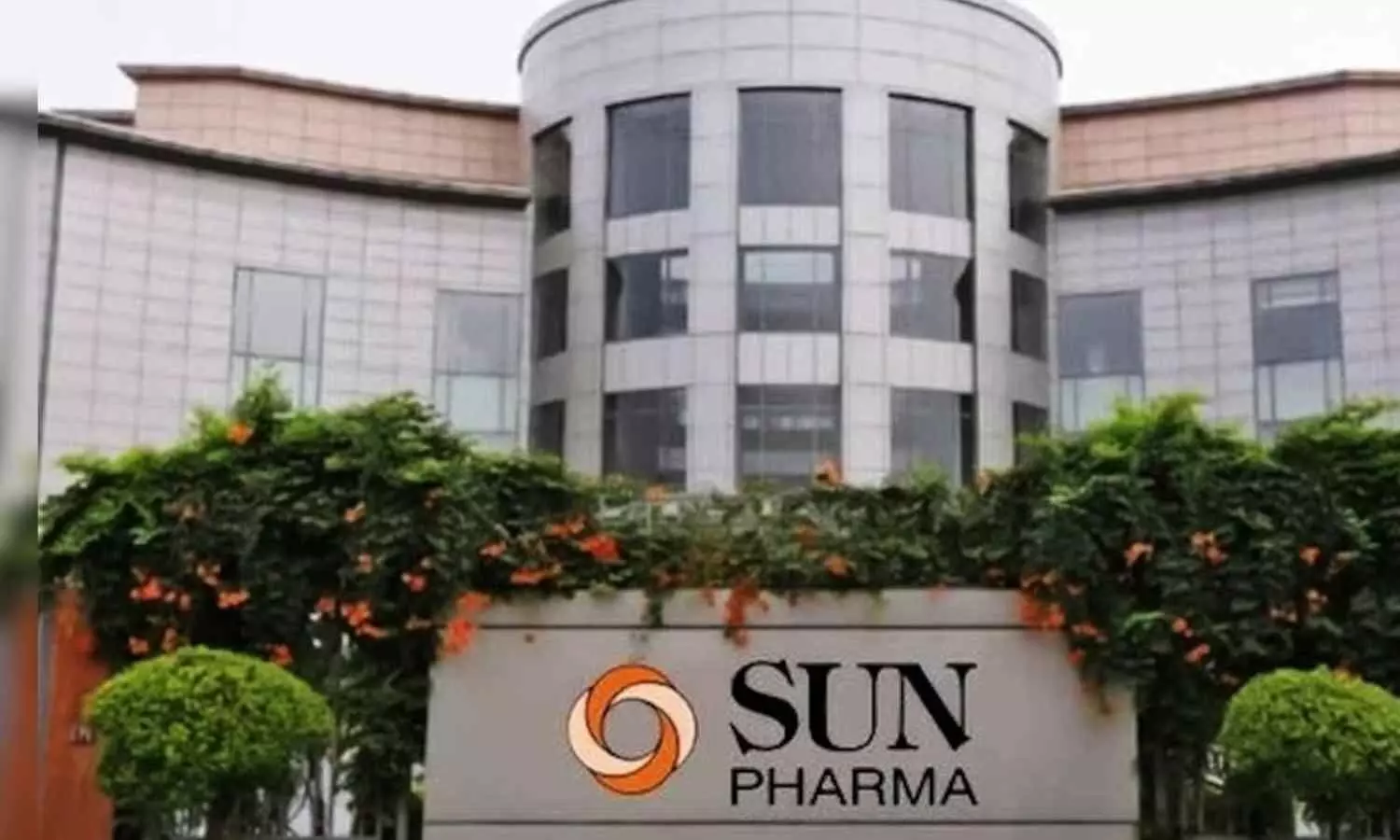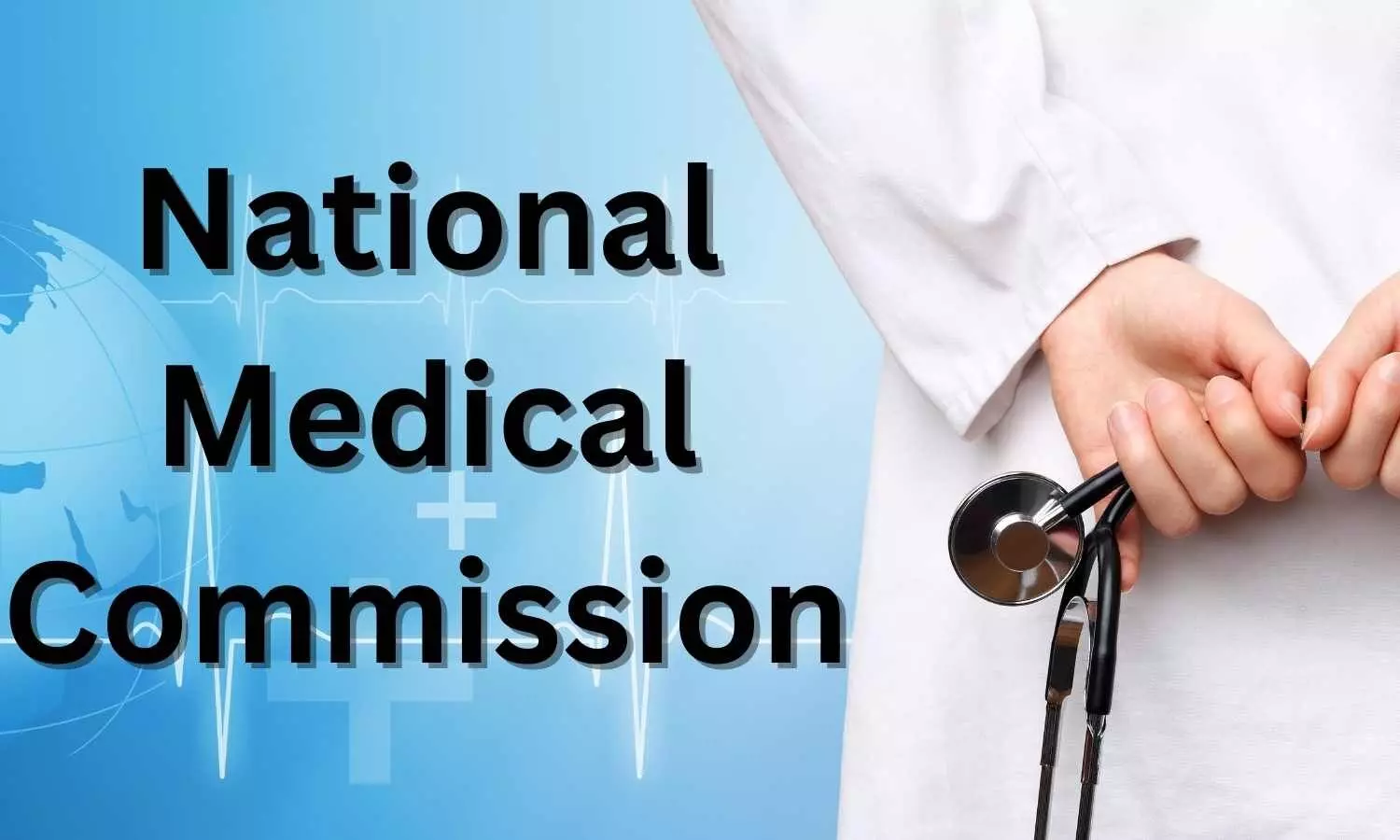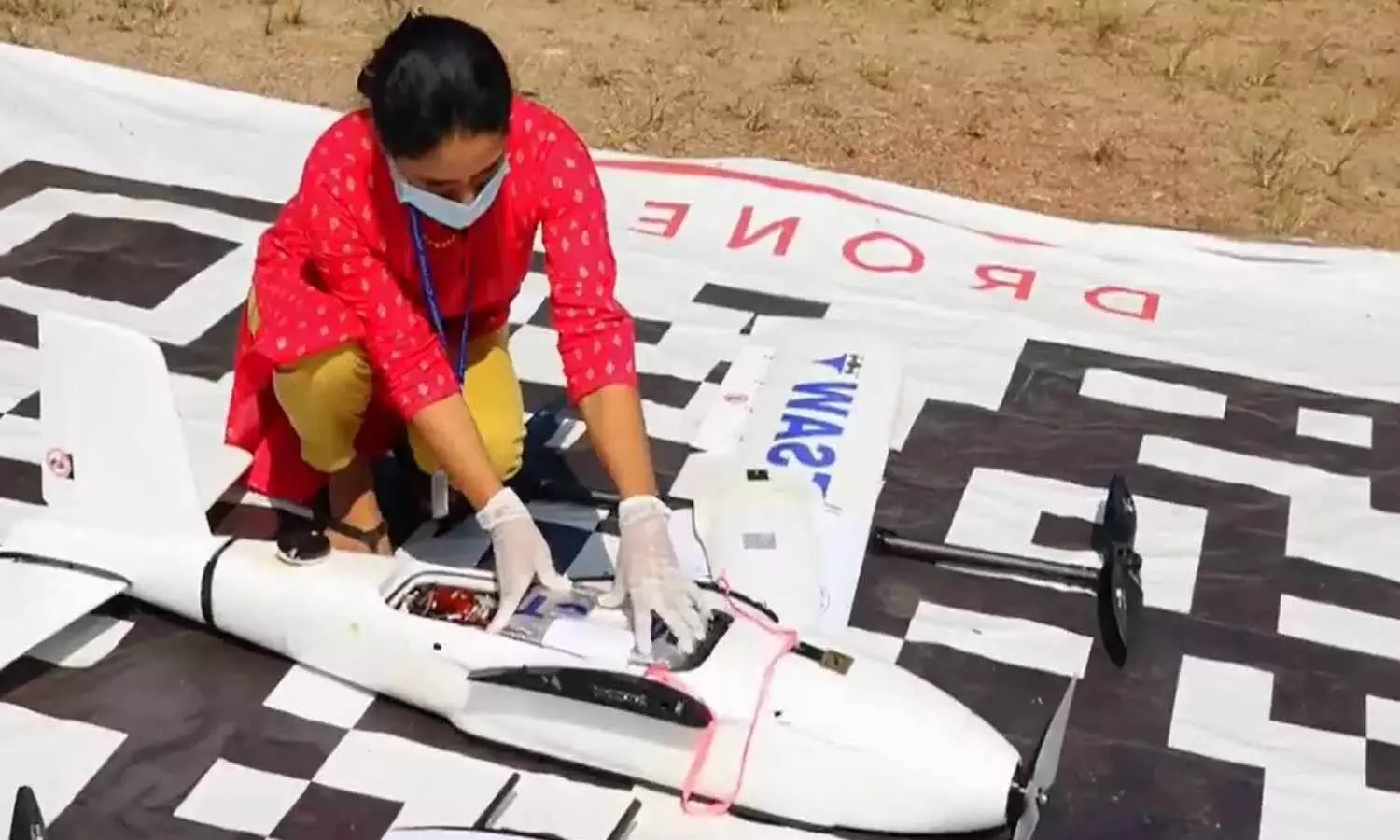Two key brain systems are central to psychosis, study finds
Powered by WPeMatico
Powered by WPeMatico
Powered by WPeMatico
Powered by WPeMatico
Powered by WPeMatico

Mumbai: Sun Pharma has informed in a BSE filing that the US Food and Drug Administration (USFDA) has determined the inspection classification status of the Company’s Dadra facility as Official Action Indicated (OAI).
US FDA conducted an inspection at Company’s facility from December 4,
2023 to December 15, 2023.
According to USFDA, OAI means regulatory and/or administrative actions are recommended.
“We will work with the regulator to achieve fully compliant status,” the Company added.
Read also: Sun Pharma Advanced Research Company halts Parkinson’s disease drug trial
Sun Pharma is an Indian multinational pharmaceutical company headquartered in Mumbai, Maharashtra. The company manufactures and markets a large basket of pharmaceutical formulations covering a broad spectrum of chronic and acute therapies. It includes generics, branded generics, specialty, complex or difficult-to-make technology-intensive products, over-the-counter (OTC), antiretrovirals (ARVs), Active Pharmaceutical Ingredients (APIs), and Intermediates.
Powered by WPeMatico

Chandigarh: Dr Naresh Panda, a distinguished professor and head of department of ENT at Post Graduate Institute of Medical Education and Research (PGI) Chandigarh, will maintain his interim role as Dean (Academics) until May 7. This came after the professor challenged the ministry’s order of appointment of Dr Surjit Singh as the new dean.
Dr Surjit Singh is currently serving as the professor and head of paediatric medicine department. Dr Panda approached the Central Administrative Tribunal challenging the appointment as he was a senior to Dr Singh.
According to the Hindustan Times, the argument surrounding the appointment of the dean (academics) dates back to March 8, when the Union Ministry of Health and Family Welfare announced the appointment of Dr Surjit Singh to the position, replacing Dr Panda from his officiating charge. Dr Panda promptly contested this decision before the CAT, citing his seniority over Dr Singh in the professorial hierarchy. Notably, Dr Panda is slated for retirement in June.
Dr Panda’s challenge hinges on procedural irregularities in the appointment process. He contends that the ministry traditionally solicits a panel of candidates from the PGIMER director for consideration. Strikingly, the panel submitted by the director featured Dr Panda’s name, omitting Dr Singh’s. Nevertheless, the ministry proceeded to appoint Dr Singh, contrary to the established protocol, as per Dr Panda’s submissions. Furthermore, the evidence presented to the CAT included a note from the director’s recommendations to the ministry, where Dr Singh’s nomination was conspicuously absent, reports The Daily.
In response to Dr Panda’s plea, CAT issued an interim order on March 11, restraining PGIMER from accepting Dr Singh’s joining report as dean (academic). However, on March 19, Dr Singh petitioned CAT to vacate the stay order. However, the court stated that the interim injunction would continue until the next hearing. The court has listed the next hearing on April 8. The last proceedings were expected to shed light on the status of the case. However, with responses pending from PGIMER and the Union government, the tribunal opted for a simple adjournment, prolonging the legal standoff. The respondents have been instructed to furnish their replies before the next hearing.
The appointment of Dean has been a long-standing issue for PGIMER. Dr Naresh Panda was appointed as the Dean of PGIMER after the Central Administrative Tribunal’s Chandigarh bench nullified the March 31 ruling maintaining the status quo regarding Dr Rakesh Sehgal’s retirement. Dr Sehgal has contested the PGIMER’s decision to have him retire at age 65. He had petitioned the Central Administrative Tribunal, asking that the respondents—PGIMER and the Ministry of Health—be instructed to allow him to continue working until he was 70 but his appeal was rejected.
Powered by WPeMatico

A clinical trial led by Weill Cornell Medicine investigators showed that a nasal spray that patients administer at home, without a physician, successfully and safely treated recurrent episodes of a condition that causes rapid abnormal heart rhythms. The study, published in the Journal of the American College of Cardiology, provides real-world evidence that a wide range of patients can safely and effectively use the experimental drug, called etripamil, to treat recurrent paroxysmal supraventricular tachycardia (PSVT) episodes at home, potentially sparing them the need for repeated hospital trips for more invasive treatments.
The study is the latest in a series of studies by lead author Dr. James Ip, professor of clinical medicine at Weill Cornell Medicine and a cardiologist at NewYork-Presbyterian/Weill Cornell Medical Center, and colleagues to demonstrate the potential of nasal spray calcium-channel blocker etripamil as an at-home treatment PSVT. Dr. Ip received compensation as a steering committee member for Milestone Pharmaceuticals, the maker of etripamil and sponsor of the trial.
Patients with PSVT experience sudden and recurrent rapid heart rhythms triggered by abnormal electrical activity in the upper chambers of the heart. Though the episodes are not commonly life-threatening, they can be frightening and cause shortness of breath, chest pain, dizziness or fainting and lead to frequent emergency department visits. Treatment for PSVT often requires hospitalization to receive intravenous medication. Some patients undergo a procedure called cardiac ablation, where the physician threads thin wires through their blood vessels to the heart and uses them to treat the short circuits the cause the abnormal normal heart rhythm.
Dr. Ip and colleagues previously showed that almost two-thirds of patients with PSVT who took one or more doses of the calcium channel blocker etripamil without a physician present experienced symptom relief on average in 17 minutes. The latest study builds on those findings, showing that etripamil is safe and effective under more real-world circumstances in a larger patient population, and could be safely used to treat multiple episodes of PSVT.
The new study enrolled 1116 patients at 148 sites in the United States, Canada and South America. It did not require a pretest dose supervised by a physician as the previous studies did. It also included patients with a history of atrial fibrillation or atrial flutter, who were excluded from the previous studies. Patients monitored their heart for one hour with a home electrocardiogram monitor after self-administering the first dose, took an additional dose if necessary, and were allowed to self-treat up to four PSVT episodes with etripamil. Two-thirds of the patients experienced relief within an hour, and the average time needed for symptom relief was 17 minutes. Mild, temporary nasal symptoms such as runny nose, nasal congestion or discomfort, and bloody nose were common after the first use of etripamil but became less common with subsequent use.
Reference:
James E. Ip, Benoit Coutu, Peter A. Noseworthy, Maria L. Parody, Farhad Rafii, Samuel F. Sears, Narendra Singh, Bruce S. Stambler, David B. Bharucha, A. John Camm, Etripamil Nasal Spray for Recurrent Paroxysmal Supraventricular Tachycardia Conversion: Results from the NODE-303 Open-label Study, Journal of the American College of Cardiology, 2024, https://doi.org/10.1016/j.jacc.2024.03.384.
Powered by WPeMatico

Canada: In a multinational cohort spanning five continents, a higher risk of incident type 2 diabetes was observed with diets having a high glycaemic index (GI) and a high glycaemic load (GL).
The findings from the PURE study published in The Lancet Diabetes and Endocrinology suggest that consuming low GI and GL diets might prevent type 2 diabetes (T2D) development.
The glycemic index assigns a numeric score to a food based on how drastically it raises blood sugar. The foods are ranked on a scale of 0 to 100; pure glucose (sugar) has a value of 100. The lower the glycemic index of a food, the slower blood sugar rises after eating that food. The more processed a food is, the higher its GI, and the more fat or fiber in a food, the lower its GI. The glycaemic load rates carbohydrates according to the glycaemic index and the amount of carbohydrates in the food.
The association between the glycaemic load and glycaemic index with type 2 diabetes incidence is controversial. Therefore, Victoria Miller, Population Health Research Institute, McMaster University, Hamilton, ON, Canada, and colleagues aimed to evaluate this association in an international cohort with diverse glycaemic index and glycaemic load diets.
For this purpose, the researchers performed a prospective cohort study (PURE study) of 127 594 adults aged 35–70 years, from 20 high-income, middle-income, and low-income countries. Using country-specific validated food frequency questionnaires, they assessed diet at baseline using country-specific validated food frequency questionnaires.
The glycemic index and glycemic load were estimated based on the intake of seven categories of carbohydrate-containing foods. Participants were categorized into quintiles of GI and GL.
The study’s primary outcome was incident type 2 diabetes. Multivariable Cox Frailty models with random intercepts for the study center were used to calculate hazard ratios (HRs).
The study led to the following findings:
· During a median follow-up of 11·8 years, 5·7% incident cases of type 2 diabetes occurred.
· In multivariable-adjusted analyses, a diet with a higher glycaemic index was significantly associated with a higher risk of diabetes (quintile 5 vs quintile 1; HR 1·15).
· Participants in the highest quintile of the glycaemic load had a higher risk of incident type 2 diabetes than those in the lowest quintile (HR 1·21).
· The glycaemic index was more strongly associated with diabetes among individuals with a higher BMI (quintile 5 versus quintile 1; HR 1·23) than those with a lower BMI (quintile 5 versus quintile 1; 1·10).
In conclusion, diets with a high GI and GL were associated with a higher risk of incident type 2 diabetes in the multinational cohort. The findings suggest that consuming low GI and GL diets might prevent diabetes development.
Reference:
Miller V, Jenkins DA, Dehghan M, Srichaikul K, Rangarajan S, Mente A, Mohan V, Swaminathan S, Ismail R, Luz Diaz M, Ravindran RM, Zatonska K, Bahonar A, Altuntas Y, Khatib R, Lopez-Jaramillo P, Yusufali A, Yeates K, Chifamba J, Iqbal R, Yusuf R, Catherina Swart E, Bo H, Han G, Li X, Alhabib KF, Rosengren A, Avezum A, Lanas F, Yusuf S; Prospective Urban and Rural Epidemiology (PURE) study investigators. Associations of the glycaemic index and the glycaemic load with risk of type 2 diabetes in 127 594 people from 20 countries (PURE): a prospective cohort study. Lancet Diabetes Endocrinol. 2024 Apr 5:S2213-8587(24)00069-X. doi: 10.1016/S2213-8587(24)00069-X. Epub ahead of print. PMID: 38588684.
Powered by WPeMatico

New Delhi: The National Medical Commission (NMC) has recently specified how many leaves a medico can take while pursuing PG medical courses.
According to a recent NMC notification, PG medical students are allowed “weekly one-day off (subject to exigencies of work). In addition, they are eligible for twenty days of Paid Casual Leave. Five days of Academic Leave per year, if availed by a student will be counted as duty. Thus, a student is entitled to 52 weekly offs and 20 Paid Casual Leave per year.”
“Female post-graduate students shall be allowed maternity leave as per existing government rules and regulations. Male post-graduate students shall be allowed paternity leave as per existing government rules and regulations. However, the period of training will be extended by the same number of days for which maternity/paternity leave have been availed,” the NMC notice said.
The Postgraduate Medical Education Board (PGMEB) of the NMC issued this clarification while answering the Frequently Asked Questions (FAQs) regarding PGMER 2023 published in the official Gazette on 01.01.2024.
Also Read: Final PGMER 2023 Regulations released in Gazette, details
Medical Dialogues had earlier reported that the final Post-Graduate Medical Education Regulations, 2023 (PGMER 2023), which were published in the official Gazette on 29.12.2023, laid down the rules and regulations regarding admission, counselling, and other details related to the postgraduate medical courses.
Referring to these regulations, the PG Medical Education Board (PGMEB) of NMC mentioned in a recent notice dated 10.04.2024, “National Medical Commission (NMC) had notified the Post Graduate Medical Education Regulations-2023 (PGMER-23), which was published in official Gazette on.01.01.2024. Post Graduate Medical Education Board, NMC has received request from stakeholders seeking clarifications on some of the provisions of PGMER-23. Accordingly, the doubts/ queries raised by the various stakeholders have been duly examined and point-wise clarifications is enclosed as Frequently Asked Questions (FAQs).”
The Commission has answered various questions regarding PGMER 2023 including the number of leaves allowed for the Postgraduate students, extension of the PG medical course in case of long leaves, posting of students during the mandatory District Residency Programme (DRP), evaluation process for dissertations and viva voce examination, the process of maintaining logbooks, mandatory skills that the PG students need to undergo before appearing in exams, who will conduct the such courses, applicability of PGMER 2023 etc.
Addressing these various questions, NMC issued the following clarifications:
1. How much leave is allowed for Post-graduate students?
Weekly one-day off (subject to exigencies of work). In addition, they are eligible for twenty days Paid Casual Leave. Five days Academic Leave per year, if availed by a student will be counted as duty. Thus, a student is entitled to 52 weekly offs and 20 Paid Casual Leave per year.
Female post-graduate students shall be allowed maternity leave as per existing government rules and regulations. Male post-graduate students shall be allowed paternity leave as per existing government rules and regulations. However, period of training will be extended by the same number of days for which maternity/paternity leave have been availed.
2. If a post-graduate student avails long leave, when can they complete the course? When can they appear in the examination?
A. For Three-Year Course: Total days in a three-year course will be 1095 days. So the total working days will be 939 days after deducting weekly offs (52 x 3 years = 156 days). A student will require 80 per cent attendance of working days (i.e. 751 days of 939 days) for appearing in the examination. However, period of training will be extended by the same number of days for which maternity/paternity leave and total excess casual leave have been availed in three years.
B. For Two-Year Course: Total days in a two-year course will be 730 days. So the total working days will be 626 days after deducting weekly offs (52 x 2 years = 104 days). A student will require 80 per cent attendance of working days (i.e. 501 days of 730 days) for appearing in the examination. However, period of training will be extended by the same number of days for which maternity/paternity leave and total excess casual leave have been availed in two years.
3. Where can students be posted during the District Residency Programme (DRP)?
PG students can be posted in Public Sector/Government-funded District Hospital, Community Health Centre (CHC), Primary Health Centre (PHC), Sub-Health Centre, Urban Health Centre and Community Outreach System in a District, etc as per the PGMER 2023 for training requirements. However, posting in any post-graduate medical institution or super specialty hospital is not permitted.
4. Can PG students be posted in Employees’ State Insurance Corporation (ESIC) hospitals under the District Residency Programme (DRP)?
Yes, PG students can be posted in those ESIC hospitals which are not running any post graduate medical institutions or Super Speciality hospitals.
5. Can students be posted in other States/UTs under the DRP?
In case all the Post-graduate Residents of a State/UT cannot be absorbed within their respective state/union territory, they can be posted to other States/Union Territories with mutual agreement of respective Governments after the approval of the Post-Graduate Medical Education Board (PGMEB) of National Medical Commission (NMC).
It shall be permissible for the post-graduate students from the North East Zone (NEZ) in various medical colleges/institutions in the country, to undergo District Residency Programme in their respective States.
6. How will dissertations be evaluated, and what is the process for viva voce examination?
Five per cent (20 marks) of the total marks of Clinical/Practical and Viva Voce marks will be for dissertation/thesis and it will be part of clinical/practical examination (Clinical/Practical -280 marks; Dissertation/Thesis — 20 marks; Viva Voce — 100 marks). External examiner outside the state will evaluate dissertation/ thesis and take viva voce on it and marks will be given on quality of dissertation/thesis and performance on its viva voce.
This regulation will be applicable for all those students appearing in the forthcoming post graduate examination.
7. How the PG students should prepare and maintain their logbooks?
The PG students from 2023-24 batch will maintain log book digitally.
8. Is it mandatory for all PG students to complete course in Ethics and in Cardiac Life Support Skill?
All the PG students admitted from 2021 and after will have to complete course before appearing in the examination.
9. Who will design and conduct the courses in Ethics and in Cardiac Life Support Skills?
The courses in Ethics and Cardiac Life Support Skills will be designed and conducted by the Academic Cell of the respective medical college/institution till further directions.
10. Post-Graduate Medical Education Regulation, 2023 (PGMER-2023) was notified on 29th December, 2023 and PG-MSR was hosted on the NMC website on 16.01.2024. When will they be applicable for starting the PG courses/increase of the PG seats?
All applications for starting the PG courses/increase of the PG seats received in NMC from 16.01.2024 onwards.
11. Does the college require to apply for recognition of PG seats?
As per PGMER-2023, once permitted, the course for the qualification will be considered recognised and seats permitted will be considered as recognised seats for registration of the degree awarded. Medical colleges/institutions running such courses will be considered as accredited medical colleges/institutions for the said course of qualification. And all permitted seats will be considered as recognised seats. Therefore, medical colleges/institutions need not apply for recognition of PG course. Colleges/institutions shall submit an Annual Self-Declaration as per the requirement of MSMER-2023 regulations. For the current year, the Post-graduate Medical Education Board (PGMEB) will soon issue a public notice for the medical colleges/institutions to submit their Annual Self-Declaration for the year 2023 (01.01.2023 to 31.12.2023).
To view the FAQs, click on the link below:
https://medicaldialogues.in/pdf_upload/faqs-on-pgmer-2023-236046.pdf
Also Read: PGMER 2023: PG Medicos must Fulfill these Conditions to Appear in Final Exam, Details
Powered by WPeMatico

New Delhi: The Indian Council of Medical Research (ICMR) on Wednesday announced the successful transportation of a tissue sample via drone from a peripheral hospital to a tertiary setting for advanced pathological testing.
This innovative approach aims to expedite the determination of whether the resected tissue is cancerous, potentially revolutionizing surgical decision-making.
According to ICMR, the approach reduces the time of transporting the tissue sample from 60 minutes to 16 minutes which can enable faster decisions during surgery.
According to ANI report, “Next milestone achieved in healthcare delivery via drone! Tissue sample transported mid-surgery from a peripheral hospital for Advanced pathological testing at the tertiary setting for deciding if the resected tissue is cancerous or not,” ICMR posted on social media platform X.
Also Read:ICMR explores drone use for medical supply transport in Himachal Pradesh
“Reducing time from 60 minutes to 16 minutes (37 km) this innovative approach would enable faster decisions during surgery and improved access to high-level health care for patients in peripheral hospitals,” it added.
The drone carried Onco-pathological samples from Dr TMA PAI Rotary Hospital, Karkala to Kasturba Medical College, MAHE, Manipal.
Notably, the demonstration as part of a path-breaking validation study has been undertaken for the first time in the country by the collaborative efforts of ICMR, Kasturba Medical College (KMC), Manipal and Dr TMA PAI Rotary Hospital, Karkala, the ICMR statement read.
During its flight, the drone efficiently conveyed intraoperative surgical biospecimens, and excised laparoscopically from a patient undergoing an appendectomy, within a duration of 45 minutes. Upon arrival at Kasturba Medical College, the sample was promptly analyzed, and the report was electronically transmitted back to the peripheral hospital. This real-time reporting enabled surgeons to make informed decisions during the ongoing surgical procedure.
“The Indian Council of Medical Research (ICMR) has been a pioneer in using drones for healthcare purposes and successfully conducted the delivery of medical supplies, vaccines, and medicines in remote areas of Himachal Pradesh, Manipur and Nagaland, blood bag delivery in Delhi National Capital Region (NCR) under its i-DRONE initiative,” the statement added.
Highlighting the significance of the event, Rajiv Bahl, the Secretary of the Department of Health Research (DHR) and Director General, ICMR emphasized that the ‘i-DRONE’ initiative was initially utilized during the Covid-19 pandemic by ICMR for distributing vaccines to inaccessible areas.
Professor Atul Goel, Director General of Health Services (DGHS), said that the study holds significant relevance for the Indian context as it can serve effectively in challenging geographical terrains, benefiting the Indian population, while also bolstering India’s healthcare infrastructure”, news agency ANI reported.
Following the demonstration, Dr Sumit Aggarwal, scientist and program officer, Division of Epidemiology and Communicable Diseases, ICMR, told ANI, “Expanding avenues for accessible and cost-effective healthcare delivery in peripheral hospitals, while pioneering insights for future organ transportation via drones. Leveraging rapid pathological reporting, reducing turnaround time from 100 to 45 minutes by road transport. Samples sent during surgery, enabling real-time reporting to surgeons, enhancing patient care.”
Powered by WPeMatico
